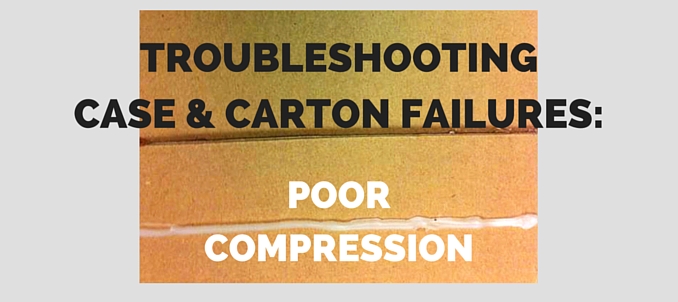Identified the right type of adhesive? Check. Applied adhesive at the correct temperature and amount? Check. Successfully sealed your package? If you’re unable to check this off your list, there are a number of possible reasons why.
One of the reasons your packaging may fail is due to poor compression. If you’ve missed our previous troubleshooting guides on other failure reasons, you can find them here:
Part 1- Troubleshooting Case & Carton Failures: Adhesive Pre-Set
Part 2- Troubleshooting Case & Carton Failures: “Chewing Gum Failure”
Part 3- Troubleshooting Case & Carton Failures: Poor Adhesion
You can apply the right adhesive, in the right amount, at the right temperature, but it’s very unlikely that your adhesive will properly seal your packaging without adequate compression. This causes packaging failures, possibly causing downtime in your facility, resulting in increased costs as your production comes to a halt.
What Indicates Poor Compression?
If you suspect poor compression, you’ll notice that the adhesive bead is not flattened and that the adhesive only appears on one side of the substrate.
How to Solve Poor Compression
Poor compression can be caused by not having enough “back pressure” to provide adequate compression or incorrect timing of compression sections.
There are two options you can try to eliminate poor compression:
1. Investigate increasing back pressure of packaging
If there aren’t a lot of contents in your packaging, this may allow the flaps of the box to bow in during compression. Sometimes the contents in the packaging give way and do not provide enough “back pressure” to support adequate compression. You can increase back pressure by adding more packaging materials and fillers inside the box or by decreasing box size. This provides more stability underneath the box flaps to support pressure on the bond.
2. Ensure proper timing if using anvil, or other motorized compression sections
The settings of your current compression section may not be timed correctly for proper compression. If compression occurs too soon, the anvil may hit and bend the flap, jamming the process. Too late and the compression section may miss the flap entirely. Adjust the settings of your equipment to time compression just right. Also make sure compression occurs within your adhesive open time. Open time is the time after the adhesive is applied during which a proper bond can be made.
Since there are many reasons packaging failures can occur, we always recommend working with an adhesive supplier to properly identify the issue. For more information, contact us at 1-800-844-1740 or use the contact form below.


